Kuala Lumpur Street Food
Kuala Lumpur Street Food is a melting pot of cultures, influenced by the British, Chinese, Indian, and local Malay population. And as the business and economic center of Malaysia, the cuisine in Kuala Lumpur is complex, diverse, and varied, with a large variety of dishes. Food here is rich in flavour, unctuous, unpretentious, and often spicy, but is also cheap / affordable, with little frills. This diverse foodscape is a way of life for Malaysians, and being an international city, the culture of food here is ever growing.
Food in Kuala Lumpur can be found along the streets in pushcarts or small cafes, in mid-range restaurants, and fine-dining establishments. Rice often accompanies a meal, with noodles, potatoes, and bread being more uncommon. Common ingredients used in many Kuala Lumpur and Malaysia dishes include shrimp / prawn, fish, coconut, soy sauce, lemongrass, pandan / screwpine leaf, turmeric, tofu, bean sprouts, cucumbers, cabbage, anchovies, tamarind, candlenuts, beef, chicken, pork, squid, mutton, kang kong / water spinach, yardlong beans, onions, tomatoes, banana, calamansi lime, jackfruit, longan, rambutan, pineapple, papaya, guava, mango, durian, palm sugar, chili and more.
Locals would often consume Kuala Lumpur Street Food in casual, sit-down eateries. A typical individual meal is usually a one-dish affair, with portions being quite filing. More often practiced is communal dining, where several small dishes are shared amongst diners, followed by desserts. The best eating spots are usually concentrated around specific areas of the older parts of the city, typically within walking distance of each other. And to placate the hungry Malaysian appetite, there are even food stalls which operate 24 hours a day!
.....
The rich and savoury Beef Rendang has a slight spicy heat, and can be served as a dry curry or wet curry. Made by slow braising beef in a heady mix of spices and aromatics, including coconut milk, ginger, galangal, powdered turmeric, lemongrass, garlic, shallots, cinnamon, cloves, star anise, powdered cardamom, palm sugar, salt, kaffir lime, and chili. This classic Malay dish is often eaten along with white rice, and when executed well, its fork tender texture is incredibly delightful.
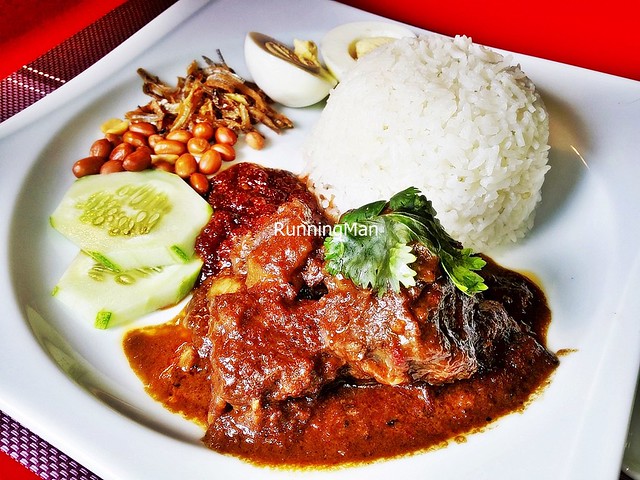 |
| Beef Rendang |
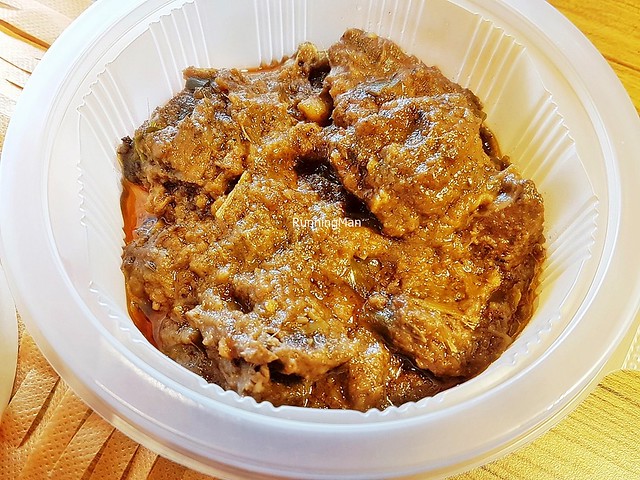 |
| Beef Rendang |
Unlike the peppery Teochew Bak Kut Teh (White) in Singapore, the Hokkien Bak Kut Teh (Black) in Malaysia is more savoury and herbal, with a richly flavoured soup / broth. A wide variety of Chinese herbs are used to make the soup stock, including dried chinese angelica (Dang Gui / Female Ginseng), goji berries (Chinese Wolfberries), codonopsis pilosula root (Tang Shen), solomon’s seal root (Yu Zhu), chinese licorice root (Gan Cao) and cassia bark (Chinese Cinnamon Bark). What is common in both versions are the sweet savoury, tender pork ribs, whose meat comes off easily from the bone. There are many different versions throughout Kuala Lumpur, as different hawkers add different types of vegetables and herbs, such as Chinese yam (Huai Shan), lovage root (Chuan Xiong), rehmannia glutinosa (Shu Di), astragalus root, kai-lan / Chinese kale / Chinese broccoli, shiitake mushrooms, cabbage, carrots, or button mushrooms. Pure comfort food, hearty and filling, often eaten with a cup of Chinese tea!
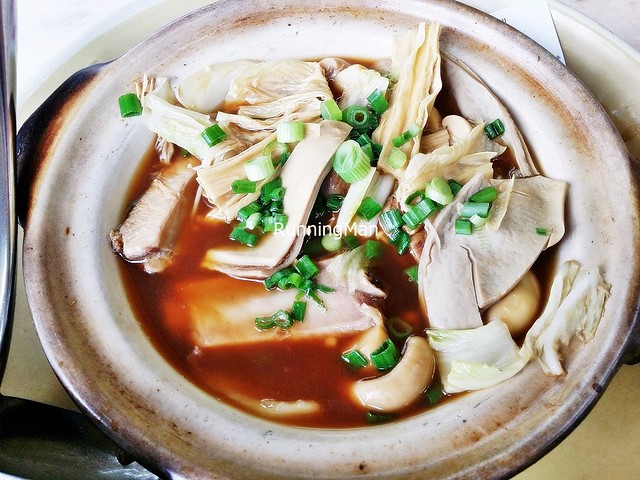 |
| Bak Kut Teh |
 |
| Bak Kut Teh |
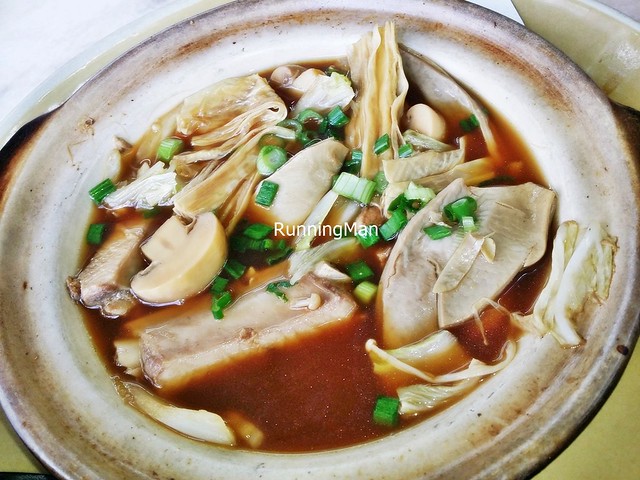 |
| Bak Kut Teh |
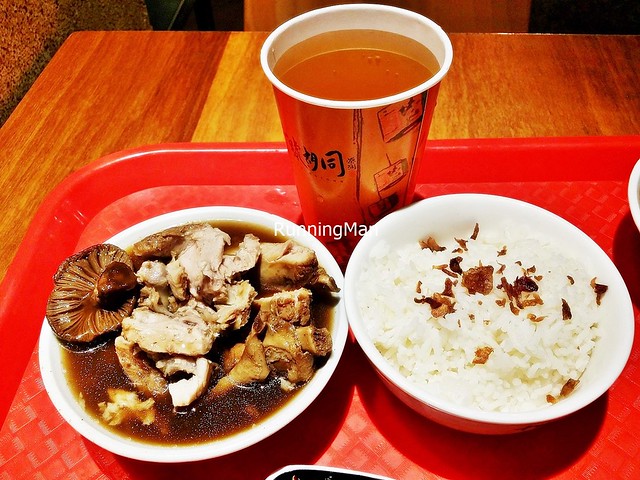 |
| Bak Kut Teh |
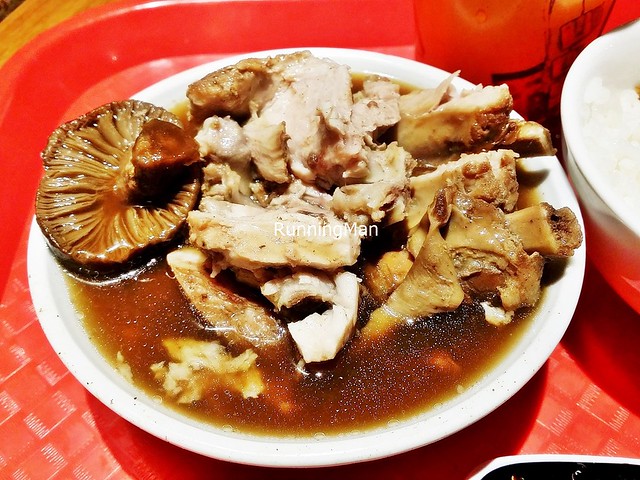 |
| Bak Kut Teh |
 |
| Bak Kut Teh |
 |
| Bak Kut Teh |
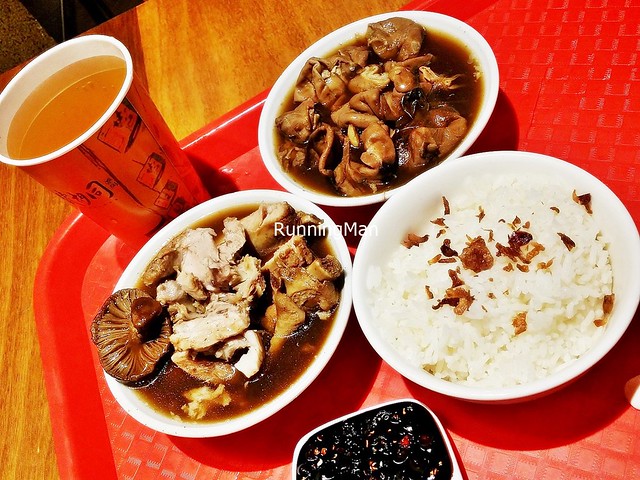 |
| Bak Kut Teh |
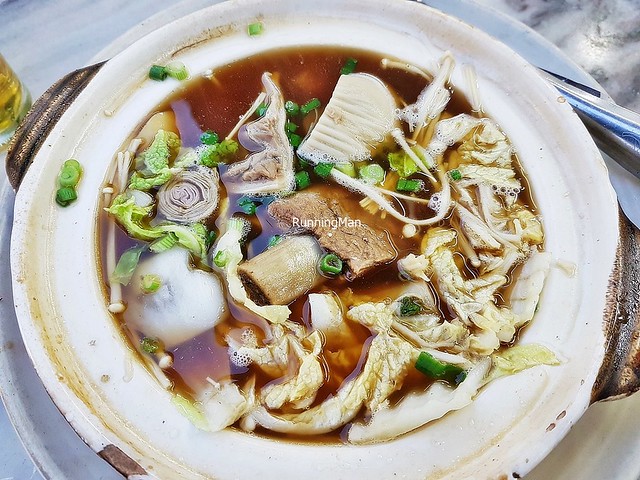 |
| Bak Kut Teh (Black) |
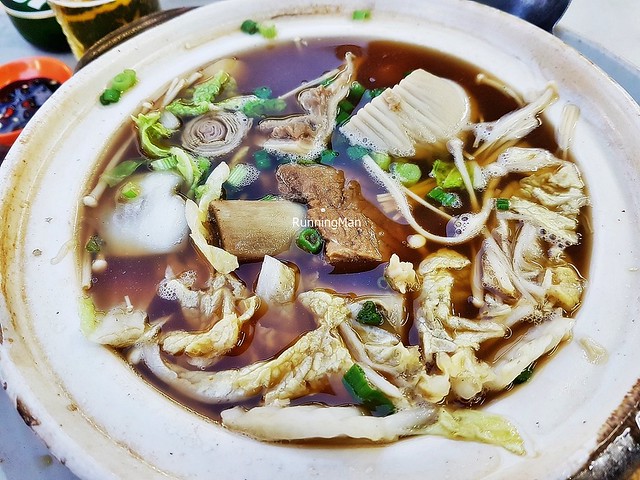 |
| Bak Kut Teh (Black) |
There isn't much options for Beer here, but at least they still have a few common international brands, like the Beer Carlsberg Special Brew, the Beer Guinness Foreign Extra Stout, the Beer Tiger White, or the Beer Guinness Bright.
 |
| Beer Carlsberg Special Brew |
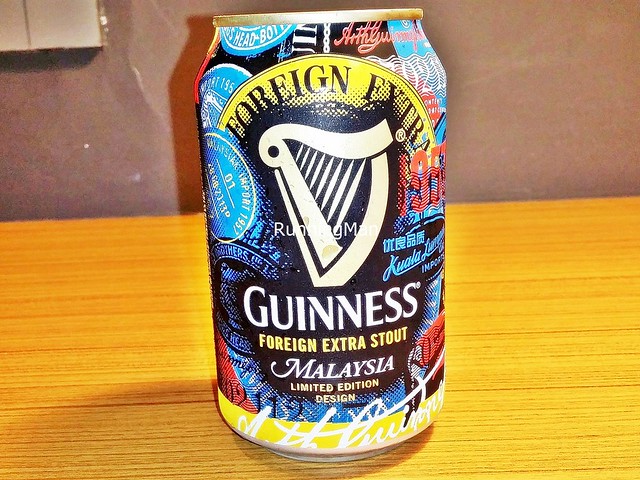 |
| Beer Guinness Foreign Extra Stout |
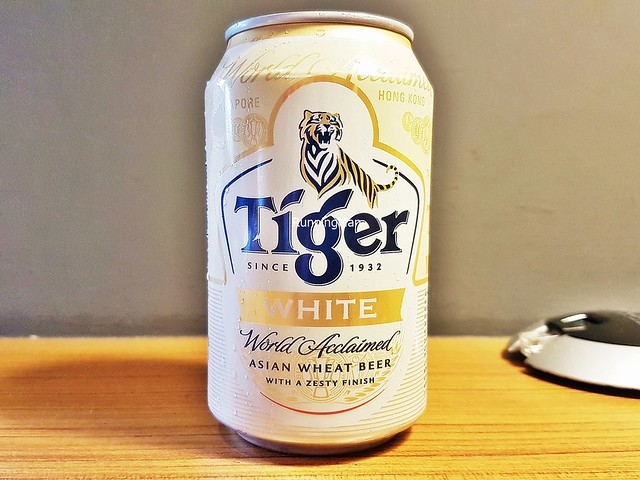 |
| Beer Tiger White |
 |
| Beer Guinness Bright |
While bearing the same name of the dish in Singapore, the version of Hokkien Mee served in Kuala Lumpur, Malaysia, is vastly different. Also known as Hokkien Char Mee, this dish is said to have originated from chef Wong Kian Lee in the 1920s. Here, thick yellow Fujian egg noodles are stir fried in a dark soy sauce, along with pork, squid, fish cake, cabbage, prawns, and crispy pork lard, over a raging charcoal fire. The dish is savoury and oily, with a slight sweetness and crunch from the cabbge, and a smoky aroma from frying. Completely unhealthy, completely delicious!
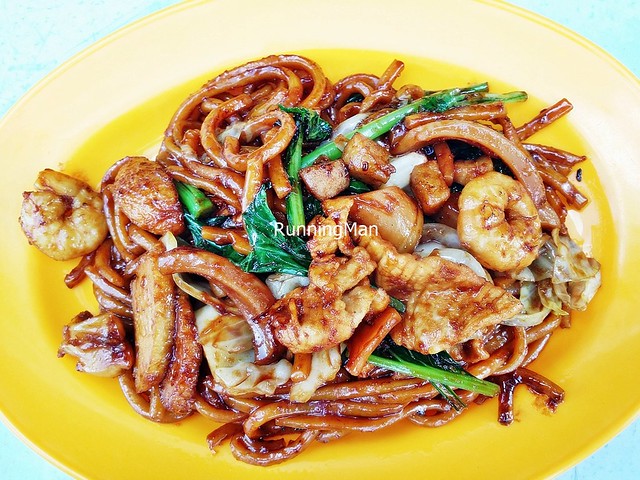 |
| Hokkien Mee |
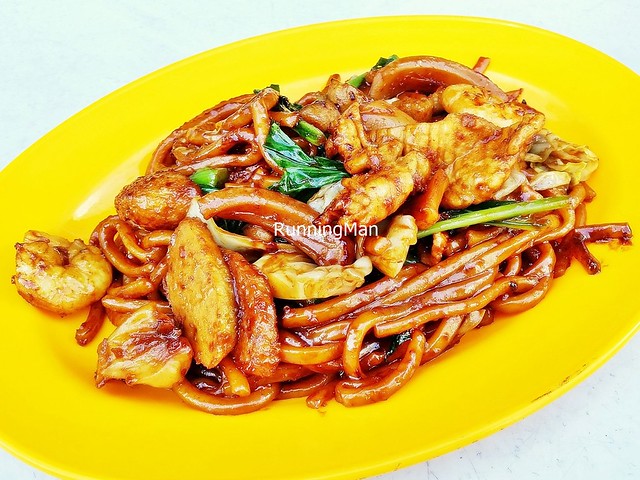 |
| Hokkien Mee |
 |
| Hokkien Mee |
 |
| Hokkien Mee |
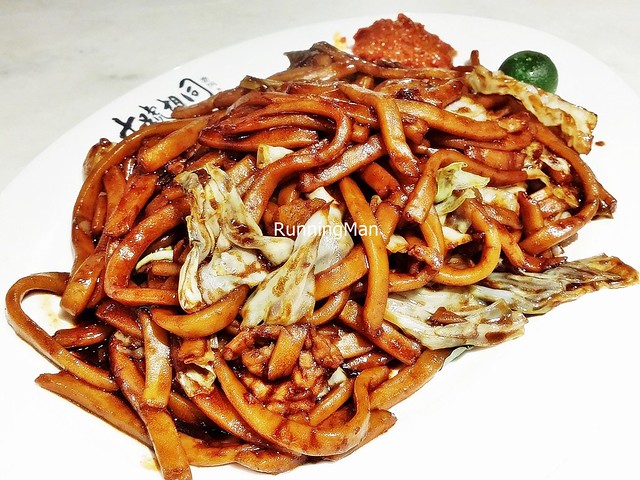 |
| Hokkien Mee |
There is a large number of Malaysians who are Indian Muslim, and they've created a fusion cuisine all their own, differing somewhat from the Singaporean Indian Muslims. The Mee Mamak, also known as Mee Goreng Mamak, is one such example. Generally, the dish consists of yellow egg noodles, stir fried over high heat in a dark sweet soy sauce (kecap manis) and tomato ketchup, along with eggs, garlic, sugar, salt, tofu, potato, bean sprouts, fish cake, shallots, then topped with a fried prawn fritter. Some version also include squid, chicken, or additional prawns. The gloriously eggy noodles are savoury sweet, oily and slippery, hearty and filling!
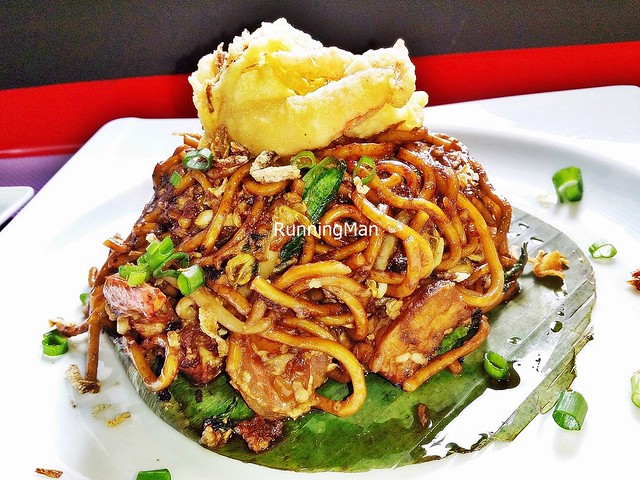 |
| Mee Mamak |
 |
| Mee Mamak |
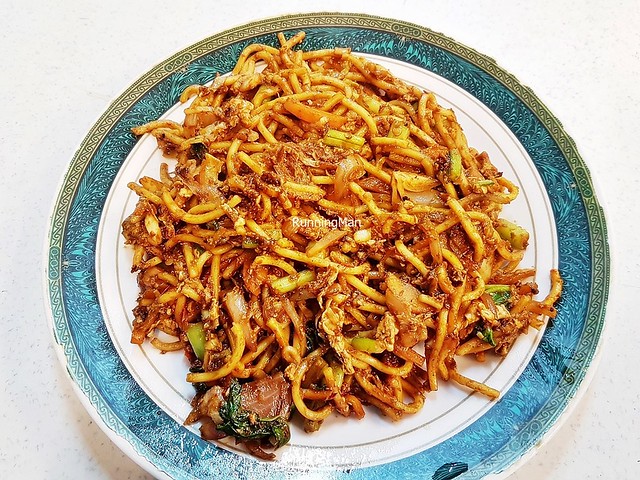 |
| Mee Mamak |
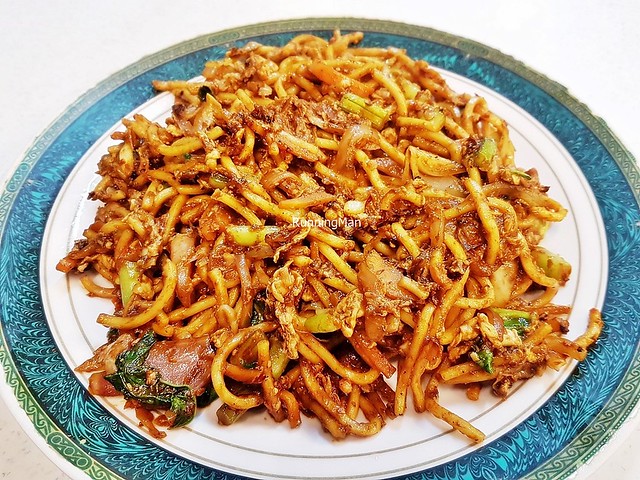 |
| Mee Mamak |
The classic Nasi Goreng Kampung is a Malaysian favourite. Unlike versions in other countries, it's a predominantly savoury dish here, with white rice stir-fried along with anchovies, shallots, onions, garlic, kang kong / water spinach, eggs, and chili. A simple, straight forward, traditional dish, it is consumed all day long, breakfast through to supper.
 |
| Nasi Goreng Kampung |
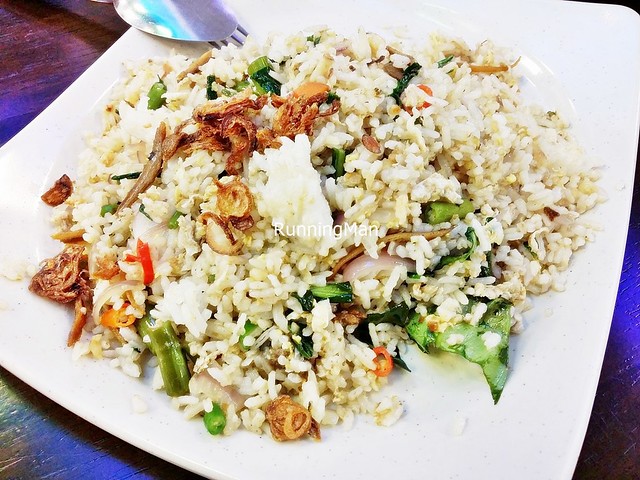 |
| Nasi Goreng Kampung |
The equivalent of Economic Rice (Malay) / Nasi Padang in Singapore, the Nasi Kandar With Tomato Rice, Sambal Tempeh, Sambal Sotong Masak, Malaysian Curry Chicken With Long Beans is a one-dish meal on its own. Picked from a variety of food on display, this heaping plate is hearty and filling. Fragrant, floral spiced rice with slices of fresh tomato; crunchy, spicy slabs of fried soybean, with chewy anchovies and salty peanuts; fresh and sweet squid rings with a bouncy texture in a thick, spicy gravy; and tender bone-in chicken chunks with soft long beans, in a savoury sweet mild wet curry. Lovely!
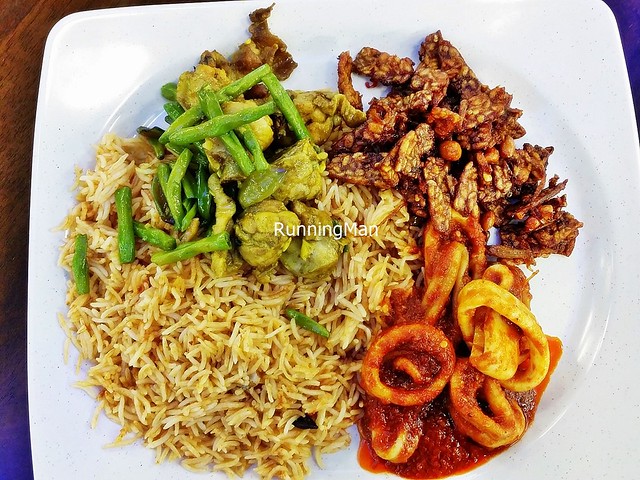 |
| Nasi Kandar With Tomato Rice, Sambal Tempeh, Sambal Sotong Masak, Malaysian Curry Chicken With Long Beans |
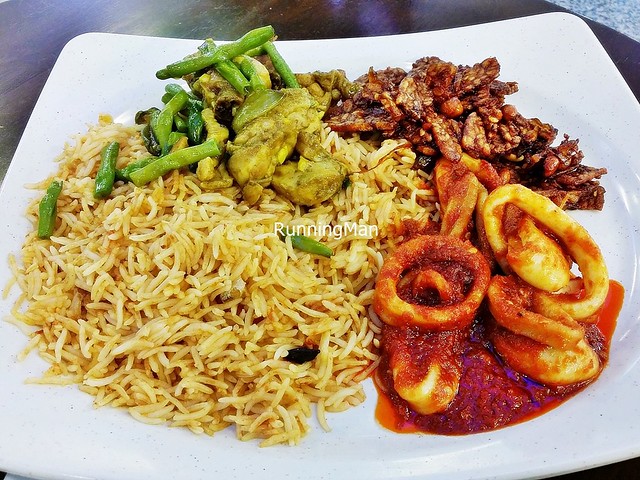 |
| Nasi Kandar With Tomato Rice, Sambal Tempeh, Sambal Sotong Masak, Malaysian Curry Chicken With Long Beans |
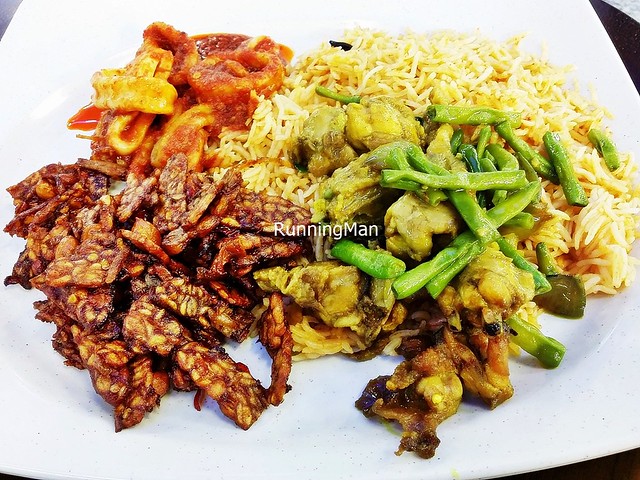 |
| Nasi Kandar With Tomato Rice, Sambal Tempeh, Sambal Sotong Masak, Malaysian Curry Chicken With Long Beans |
A traditional Malay breakfast dish popular throughout Kuala Lumpur, Malaysia, the Nasi Lemak here is very similar to the version in Singapore. Fragrant white rice infused with coconut milk, served with crunchy fried anchovies and salted peanuts, hard boiled eggs, fresh sliced cucumbers, and a large, fried chicken leg, with a beautifully crisp skin and tender meat. The sambal here is possibly more spicy than the Singaporean version, as well as more fragrant.
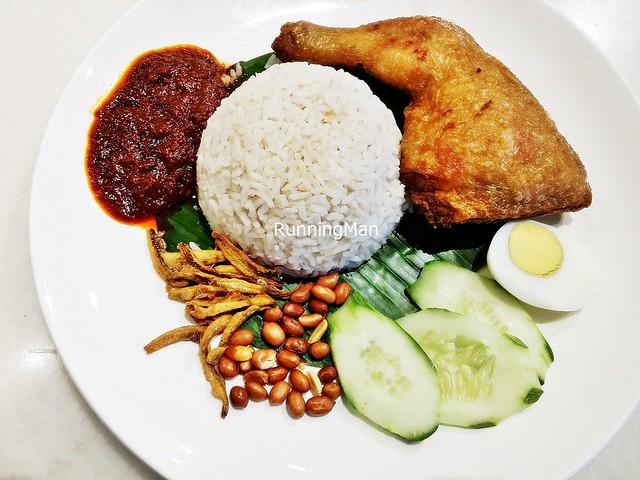 |
| Nasi Lemak |
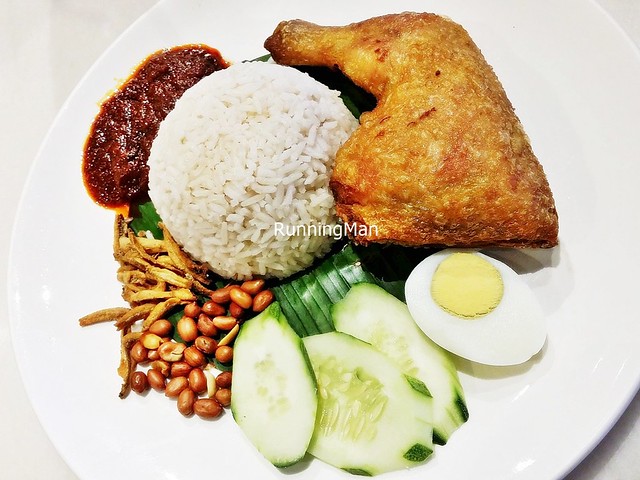 |
| Nasi Lemak |
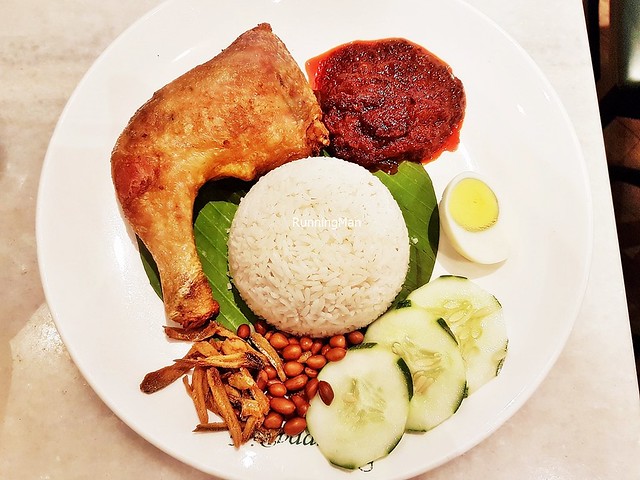 |
| Nasi Lemak |
 |
| Nasi Lemak |
Pan Mee, known as Ban Mian in Singapore, is a popular Chinese Hakka style dish, where the flat flour noodles for the dish are hand kneaded. While it can be served either in soup or dry form, the dry version of Pan Mee is especially popular, in particular, Chili Pan Mee. The noodles are usually served with several ingredients, including minced pork, fried onions, anchovies, fried soybean skins, shiitake mushrooms, pork meat balls, kai-lan / Chinese kale / Chinese broccoli, or egg, in a thick, dark soy sauce along with sambal chili. A bowl of soup made from boiled pork bones and anchovies is served alongside. All the ingredients are mixed together before being eaten, and the dish tastes savoury, earthy, salty, sweet, and spicy.
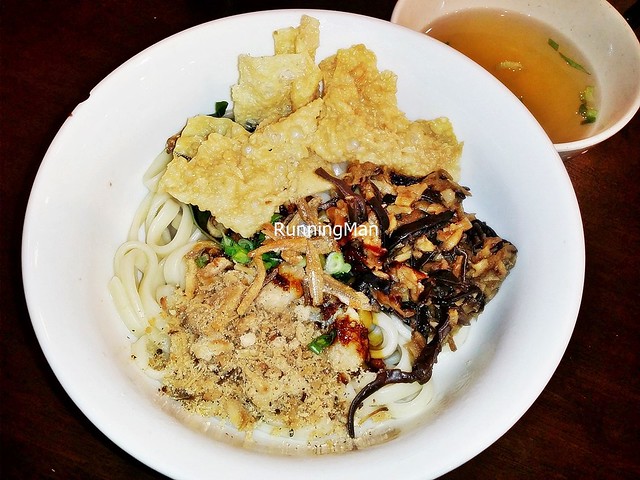 |
| Pan Mee |
 |
| Pan Mee |
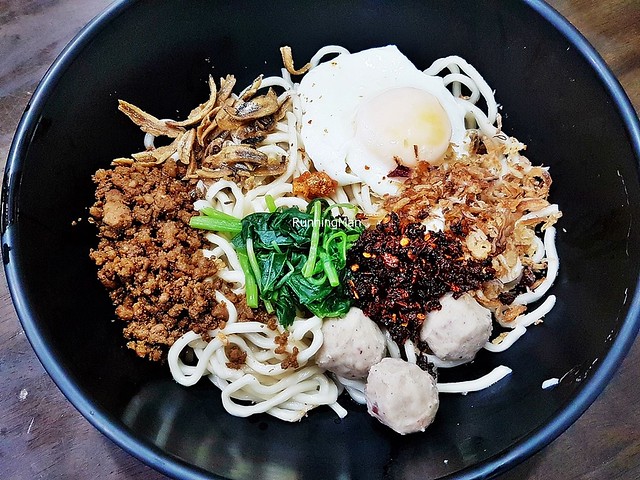 |
| Pan Mee |
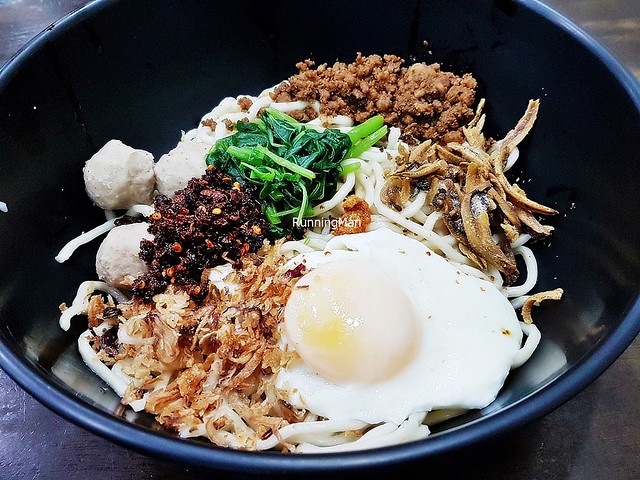 |
| Pan Mee |
Named for its Malaysian creator Ramly Moknin, the Ramly Burger refers to the unique style of preparing this burger, in which the meat patty (chicken, beef, or fish) along with condiments (spices, black pepper, tomato ketchup, or chili sauce), are wrapped in a thin layer of egg, resulting in a neat packet, which is then served on vegetables (cucumbers, lettuce, or tomatoes) between 2 fluffy burger buns. Good!
 |
| Ramly Burger |
 |
| Ramly Burger |
The Roti Canai is a South Indian style flatbread, commonly sold across Kuala Lumpur and Malaysia, and is also known as Roti Prata in Singapore. This staple dish is made from frying a piece of tossed and spinned dough in ghee (clarified butter), and is served with a choice of wet curry (chicken curry, fish curry, or dhal). It usually has a crisp exterior, with a semi-thick doughy interior that has a chewy texture.
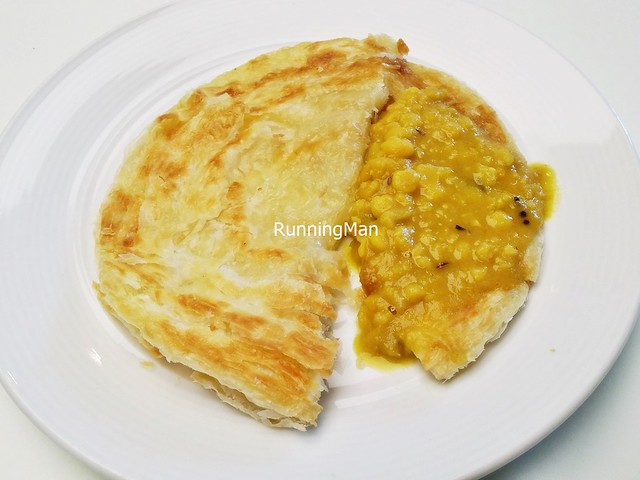 |
| Roti Canai |
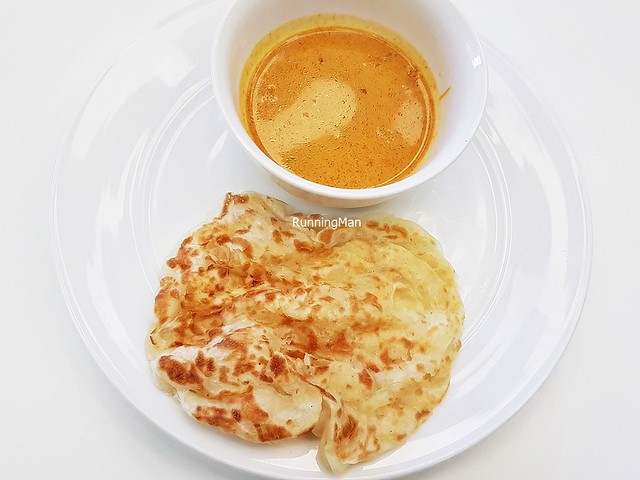 |
| Roti Canai |
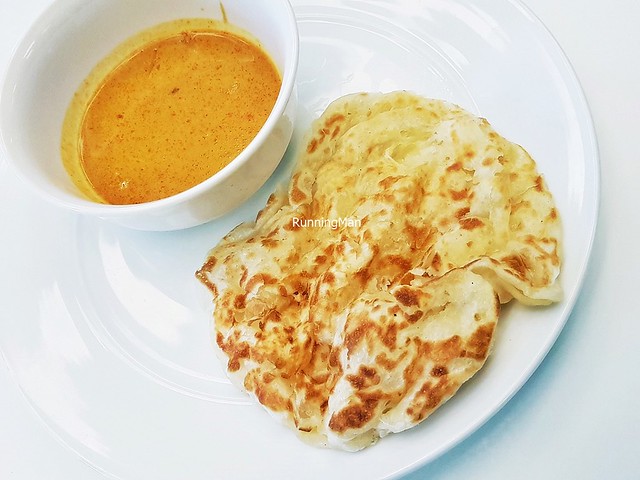 |
| Roti Canai |
Satay is a traditional dish of skewered marinated meat (chicken, beef, mutton), served alongside sliced cucumbers, onions, and boiled compressed rice cakes (Ketupat), with a savoury sweet chunky peanut sauce. I find the spice rub to be more generous here, and the meat tends to be chunky yet tender, still retaining a moist texture within. The smoky, grilled flavour of the meat is so unstoppable!
 |
| Satay |
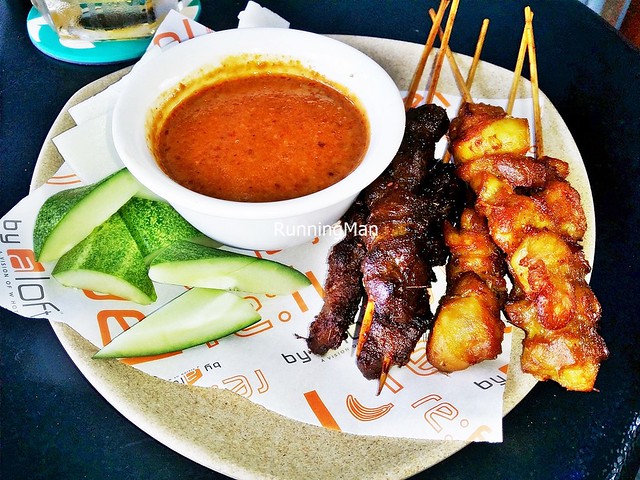 |
| Satay |
 |
| Satay |
I remember Tam Tam Crab Flavoured Snack as that crunchy, tasty snack that everyone always went for in a bag of mixed nuts and crackers. It may just be processed crab seasoning, but it's a nostalgic taste from childhood.
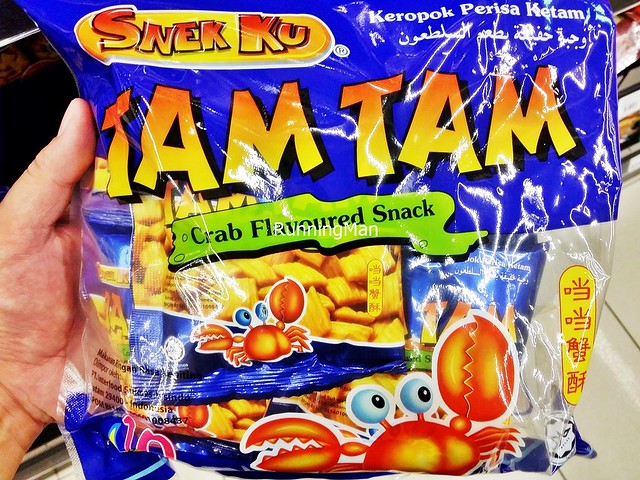 |
| Tam Tam Crab Flavoured Snack |
A refreshing glass of Watermelon Juice helps to cool off the warm heat of the day here, and such fresh fruit stalls selling juice are quite common along the streets.
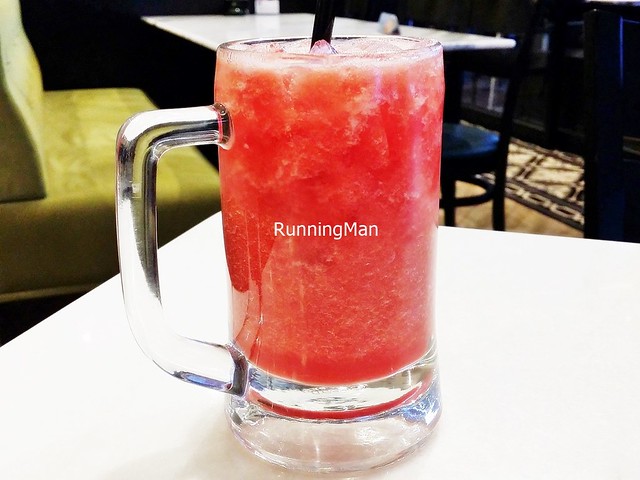 |
| Watermelon Juice |
What is known as Economic Rice (Indian) / Thali elsewhere is called Banana Leaf Rice here. It's most commonly served around the Brickfields area, which is the 'Little India' of Kuala Lumpur, Federal Territories Of Malaysia, Malaysia. It features fluffy long grain white rice, served with a side of 3 vegetable dishes - usually either cabbage, spinach, cauliflower, brinjal / eggplant / aubergine, or onion pickles. It's also accompanied by papadum and 1 main dish - usally either chicken, mutton, fish, or another vegetarian dish. It differs from the South Indian style because it does not include yoghurt or a sweet / dessert.
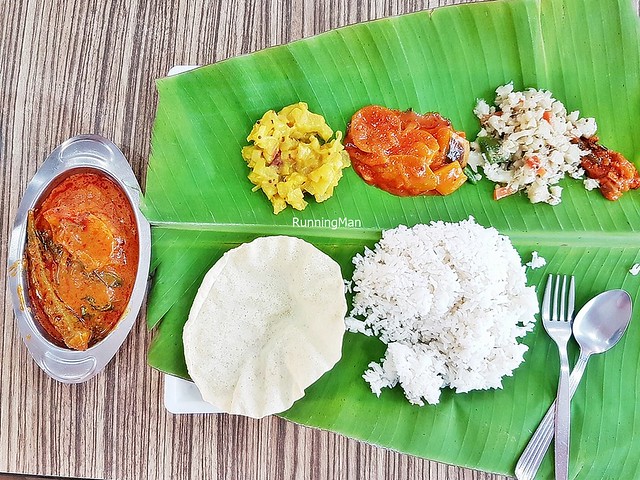 |
| Banana Leaf Rice |
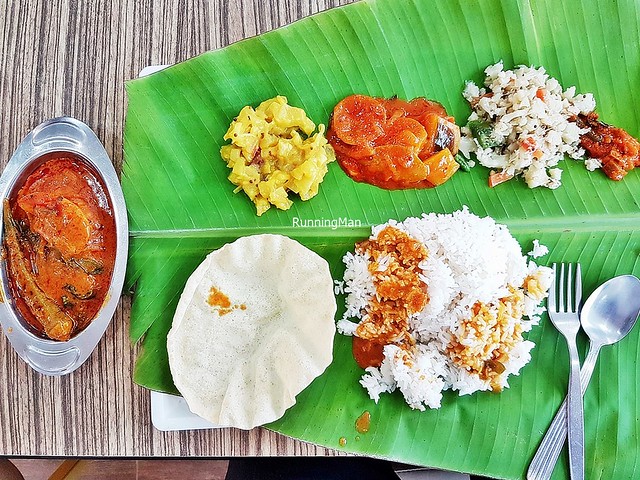 |
| Banana Leaf Rice |
The Pork Noodles is a hearty dish, a bowl of piping hot pork soup / broth with yellow egg noodles. Garnished with choy sum / Chinese flowering cabbage, minced pork, sliced pork loin, pig's liver, and a soft-boiled egg. The soup / broth is flavoured with pork lard and pepper, giving it a savoury sweet peppery taste, very tasty.
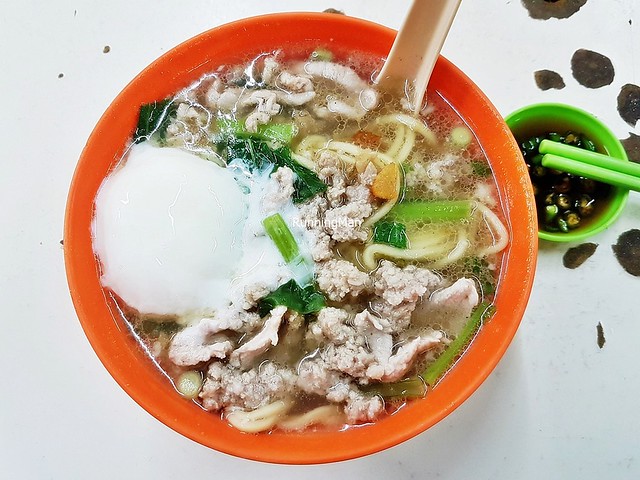 |
| Pork Noodles |
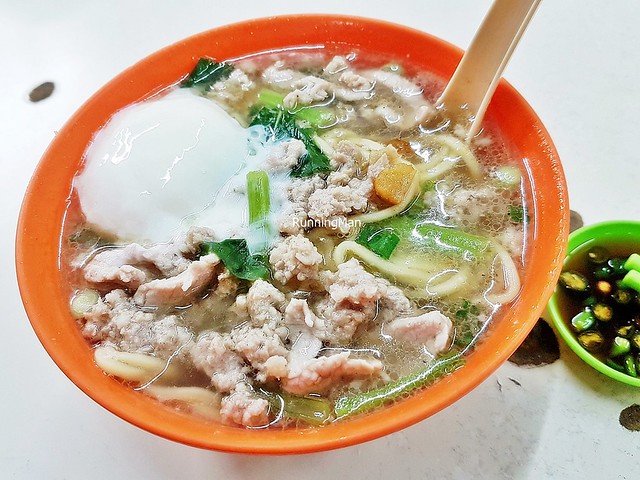 |
| Pork Noodles |
The Teh Halia is an Asian herbal beverage, made by infusing ginger root into black tea, then sweetened with condensed milk. This results in a earthy sweet spice flavour, with a slight lingering burn. Said to aid digestion and prevent stomach upset from spicy foods.
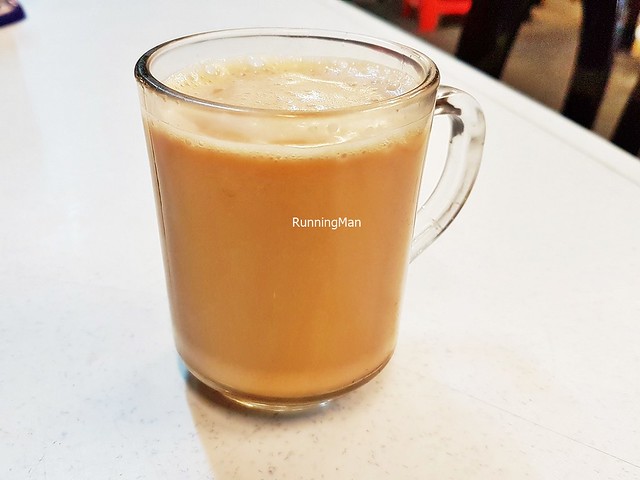 |
| Teh Halia |
A type of Malaysian pastry, the Siew Pau, also known as Baked Bun, has a filling of sweet savoury barbecued marinated pork / chicken, onions, and green peas, within a pastry shell that is firm, crisp, and flaky, with buttery notes. It originated from Seremban, Negeri Sembilan, Malaysia, but the popularity of this delicious snack means it can now be found throughout the country.
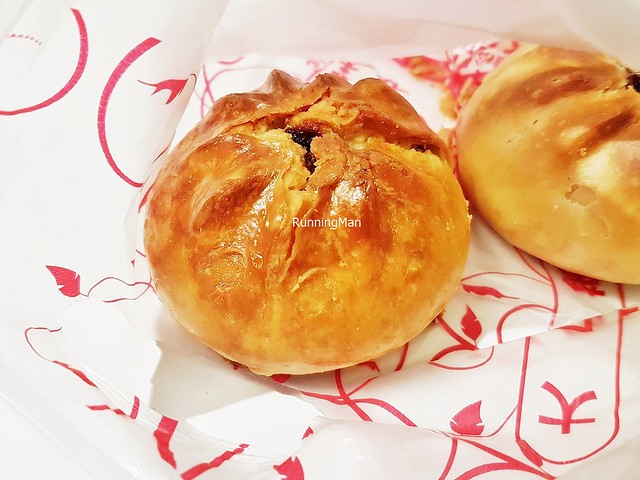 |
| Siew Pau |
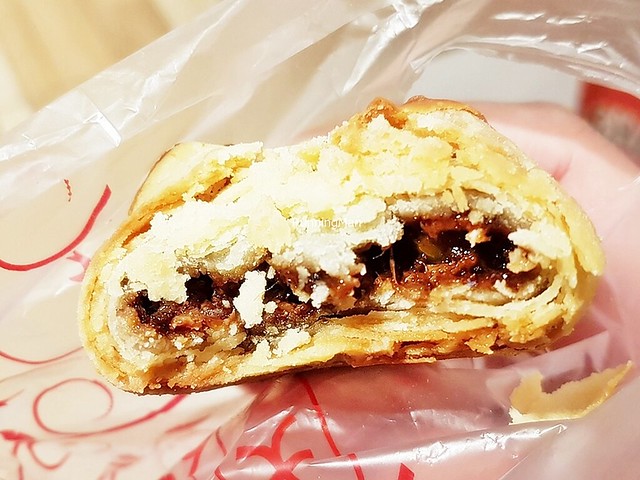 |
| Siew Pau |
.....


CONVERSATION